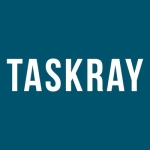What is our primary use case?
There are two main things I use it for. The first one is lead management and opportunity processing, internally in my organization, project management, and task creation. The second thing I use most is support inside the community of Asana. I'm an ambassador of the Asana community. I also use Asana for this type of support.
How has it helped my organization?
Before Asana, we didn't have a tool to control our leads or our opportunities. It was just by memory. If we were talking with a client, we were just thinking about calling that lead or that client in a day. With Asana, I have my leads more organized. I know when to call. I can go back and see what I said on the last call, or what I emailed the last time we contacted them. It's an easier way to keep up with my prospects and my opportunities.
What is most valuable?
The best feature is how easily you can create rules. You can do it just via point and click. I like how easy it is to use the rules within Asana.
The initial setup was simple.
Asana has a site available where you can check the status and see if it's working or in the middle of downtime still (when downtime happens).
Technical support has been excellent.
What needs improvement?
One of the main things I've been wishing for is an ID, a short ID, just like Jira. That is another tool that I used before. It has an ID for every task in Asana. So it's a short way to know what task are you writing your things on, and it's easier to control your activities.
In Asana, there's no way to add a custom date field. That's another thing.
Both of those functionalities I'm wishing for, or I'm hoping for in the short term.
Occasionally, Asana does go down.
For how long have I used the solution?
I've been using the solution for less than a year - 11 months or ten months, probably.
What do I think about the stability of the solution?
Since we've had Asana, we have been down twice for two to three hours each time. Asana provides a website to know the status of Asana in general. It's an easy way to check if Asana is down or not. We know that every tool has these types of failures. We wish we don't have any more failures, however, we may continue to have them. That said, Asana is excellent in how they provide the status of Asana in general.
What do I think about the scalability of the solution?
The ability to scale depends on the implementation within your organization. However, the scalability is there to do it on your own. You can have a thousand employees using Asana. I don't see any problems scaling up using Asana.
Right now, we have about 50 people on the solution. We use it quite extensively.
How are customer service and support?
When we need support, we have a VIP support channel as we are an Asana partner. We have Asana support directly with the Asana support team. We are extremely satisfied with the help we get.
How would you rate customer service and support?
Which solution did I use previously and why did I switch?
Besides Asana, we work with Salesforce, Twilio, and Slack. I've used Jira in the past as well.
We did not previously use a project management solution at this company.
How was the initial setup?
I was involved in the initial implementation. It was straightforward. The difficult part of this type of implementation is how you structure your teams and projects within Asana, however, how you use Asana to do this is intuitive. We didn't have any problem with how to accommodate or establish those things. I'd rate the simplicity of the implementation at a four out of five.
The deployment didn't take more than two weeks.
The maintenance is easy. It's very smooth. We do not require a maintenance team, however, we do have team leaders that will do occasional maintenance.
What about the implementation team?
We handled the implementation in-house.
What was our ROI?
I don't have exact ROI numbers, however, we've seen time investment hours and we know that each hour counts as money. We've seen some return on investment, in time, in productivity. Those two KPIs have seen marked improvements.
What other advice do I have?
We are Asana partners.
I use the most recent version and I use it every day.
I'd rate the solution nine out of ten. It's a great way to organize your daily work within your organization. It doesn't matter your team or the department you're working in. It's very flexible.
Which deployment model are you using for this solution?
Public Cloud
If public cloud, private cloud, or hybrid cloud, which cloud provider do you use?
Amazon Web Services (AWS)
Disclosure: My company has a business relationship with this vendor other than being a customer. Partner





















